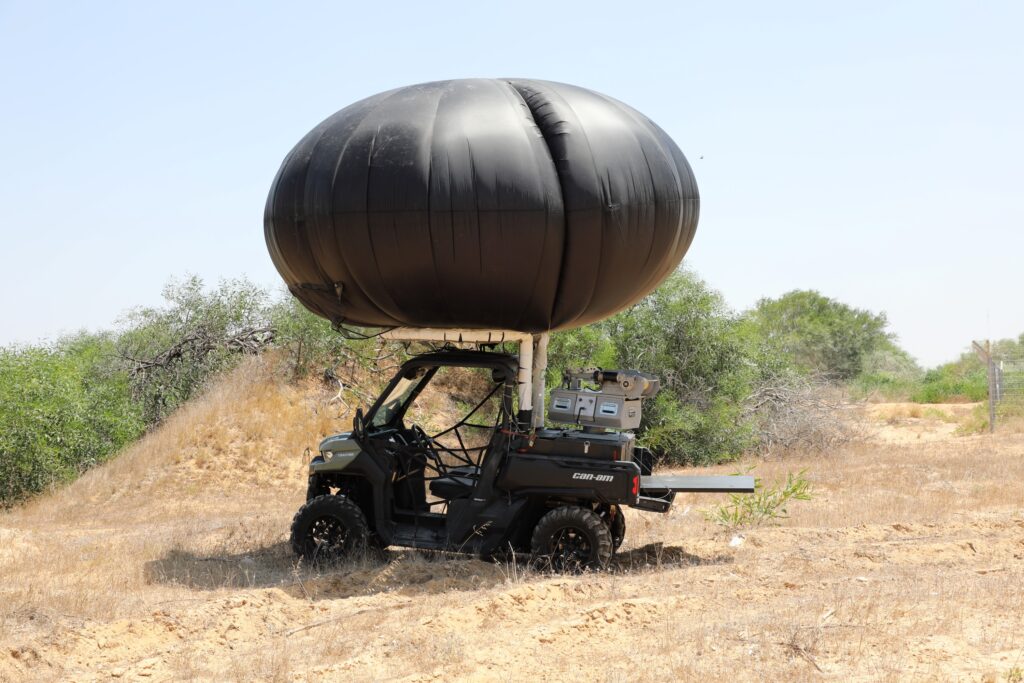After the pioneering advanced aerostat technology company RT announced how its latest ATV-deployed aerostat system can provide a superior solution for border security professionals along the Unired States’ porous southern border, Curtis Hand interviewed RT’s CEO and founder, Rami Shmueli, for European Security & Defence (ESD) and its sister Mittler Report media outlets.
A former military intelligence officer, Shmueli set up RT LTA. While the company is headquartered with production lines in Yavne, Israel, it also has offices in Texas to supply public-sector US Customs and Border Protection customers with complete aerostat systems for intelligence, surveillance, reconnaissance (ISR) and communications. RT also showcased its full range of advanced aerostat solutions at the Border Security Expo in Phoenix, Arizona, on 8/9 April 2025. Hence, ESD is able to share some of Shmueli’s unique insights with its readers and subscribers.
ESD: Where is the aerostat in service/deployed now?
Shmueli: We have sold more than 100 systems all around the world – all continents including Australia.
ESD: What has been the aerostat’s success in Israel?
Shmueli: Our aerostat systems have been deployed in Israel for many years, operating in various missions including border protection, situational awareness, perimeter security, law enforcement, public safety and VIP protection.
ESD: What are the lessons for Europe from the aerostat’s experience in other markets, like Israel?
Shmueli: As in Israel and the USA, maritime and border security challenges in Europe are growing, and that’s where RT’s SkyStar aerostat systems offer valuable lessons.
Proven in active conflict zones, SkyStar systems have emerged as one of the most effective and reliable sensor platforms, offering a unique advantage for border protection and various operational missions during warfare.
Designed for rapid deployment and mobility, these aerostats operate 24/7 with minimal crew and can carry a wide range of payloads, including electro-optical/infra-red (EO/IR) cameras, communication relays, signals intelligence (SIGINT) and electronic intelligence (ELINT) systems and more.
Key benefits demonstrated in the field include:
- survivability in challenging environments;
- strategic positioning for continuous wide-area surveillance, supporting border security, force protection, target acquisition, bomb damage assessment and logistics defence;
- 360° coverage for surveillance and communication tasks;
- mission persistence with long endurance;
- and scalability and flexibility to adapt to evolving operational needs.
These capabilities make aerostat systems a valuable force multiplier for European defence and homeland security missions.

Shmueli: RT’s SkyStar aerostat systems have already demonstrated their value in several European countries (Germany, Italy, the Netherlands etc) through successful deployments in both defence and homeland security missions. Their ability to provide persistent, real-time intelligence has proven especially useful in border surveillance, protection of critical infrastructure, crowd monitoring during large-scale events, and emergency response.
The system’s success in Europe lies in its adaptability to various terrains and mission profiles, from coastal regions to remote land borders. Its rapid deployment, minimal logistical footprint and low operational costs make it an ideal solution for European forces facing dynamic and evolving security challenges.
Looking ahead, SkyStar systems have strong potential for broader adoption across Europe. With growing demand for scalable, mobile and cost-effective surveillance solutions – particularly in light of ongoing geopolitical tensions and migration challenges – aerostats can play a vital role in strengthening situational awareness, border control, and public safety across the continent.
ESD: How might the aerostat help in monitoring enemy movements and preventing attacks in NATO Europe?
Shmueli: Aerostats can play a crucial role in enhancing NATO Europe’s ability to monitor enemy movements and prevent potential attacks. Their persistent, elevated surveillance capabilities provide continuous real-time intelligence over wide areas – far beyond what ground-based systems or even some airborne platforms can offer.
RT’s SkyStar aerostats, for example, can be rapidly deployed and repositioned as needed, making them ideal for both static border surveillance and dynamic operational environments. Equipped with advanced payloads such as EO/IR cameras, SIGINT/ELINT sensors, and communication relays, these systems enable forces to detect, track, and analyse enemy activity, day and night, in all weather conditions.
In a NATO context, aerostats can be used to:
- monitor strategic borders and sensitive areas;
- detect and track suspicious movements long before they reach critical zones;
- Provide early warning and enhance situational awareness for rapid decision-making
- support co-ordination among allied forces by relaying real-time data across units.
Their ability to remain airborne for extended periods with minimal crew makes them a cost-effective force multiplier, significantly improving perimeter security, mission persistence, and rapid threat response: key elements in preventing attacks and maintaining regional stability.
ESD: Thank you.



![RT1 [RT]](https://euro-sd.com/wp-content/uploads/2025/04/RT1-RT.jpg)
